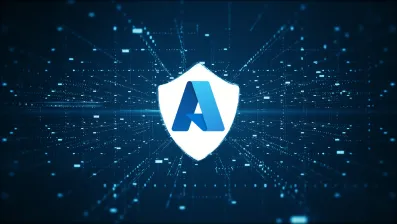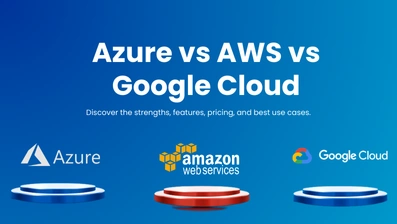If you're working in the cloud — especially with Microsoft Azure — you're probably juggling a lot.
From provisioning resources to managing configurations and maintaining compliance, it's a lot to handle manually.
That’s why automation has become the secret weapon for modern IT and DevOps teams.
It doesn’t just save time — it reduces human error, improves consistency, and frees up your engineers to focus on innovation rather than maintenance.
Whether you're running a startup or managing a global enterprise, Azure automation tools can help you stay lean, agile, and secure.
In this blog, we'll explore the top 10 Azure automation tools you should know about in 2025 and how to choose the right one for your specific needs.
What is an Azure Automation Tool?
An Azure Automation Tool is a cloud-native solution offered by Microsoft that helps automate, orchestrate, and manage time-consuming and repetitive tasks across both Azure and hybrid cloud environments.
It allows you to write and execute PowerShell and Python runbooks to manage infrastructure, perform routine maintenance, and enforce governance policies without manual intervention.
With capabilities like update management, inventory collection, change tracking, and process automation, Azure Automation provides a centralized platform to streamline IT operations.
You can also integrate hybrid workers, enabling automation beyond the cloud, including on-premises data centers and other external environments.
By leveraging automation, businesses can significantly reduce operational overhead. In fact, according to Microsoft, organizations utilizing Azure Automation have seen up to a 60% reduction in manual operations and related costs.
It also helps improve consistency, enhances security, and minimizes human error, particularly valuable in large-scale environments where even small mistakes can have major consequences.
Whether you're managing virtual machines, automating patch deployments, or scheduling routine cleanup tasks, Azure Automation makes it easier to maintain a well-governed, scalable cloud infrastructure with less effort and greater reliability.
Why Azure Automation Matters for Businesses?
Managing complex cloud environments manually is time-consuming, inconsistent, and prone to human error.
That’s where Azure Automation Tools come into play — offering a smarter way to simplify operations, reduce costs, and enforce consistent governance.
Whether you're scaling a startup or managing enterprise infrastructure, automation ensures your systems stay efficient, secure, and ready for growth.
Here’s why the top Azure automation tools are critical for modern businesses:
1] Boosts Operational Efficiency
Automation eliminates the need for manual, repetitive tasks like patching servers, managing virtual machines, and cleaning up unused storage.
With the best Azure automation tools for 2025, your team can shift focus from maintenance to innovation.
These tools ensure continuous, hands-free operation, keeping workloads optimized around the clock while reducing errors and bottlenecks.
2] Enhances Security and Compliance
Security gaps often arise from skipped updates or inconsistent configurations.
Azure Automation Tools are key components of a robust Azure cloud security strategy. & help standardize patch management, enforce policies, and rotate credentials automatically.
They reduce the risk of breaches and support audit-readiness across your environments.
When you compare Azure automation tools, their built-in compliance features make them a must-have for regulated industries.
3] Reduces Cloud Costs
Running idle virtual machines or forgetting to deallocate unused resources can quietly inflate your cloud bill.
Top Azure automation tools let you schedule shutdowns, automate cost-saving actions, and monitor usage patterns.
This proactive management ensures you only pay for what you need — a vital advantage for businesses watching their bottom line.
4] Improves Deployment Speed and Consistency
Manually configuring environments or provisioning infrastructure can slow down your release cycle.
By integrating Azure DevOps automation tools into your CI/CD pipeline, deployments become faster, more predictable, and repeatable.
Whether you're launching new services or updating existing ones, automation keeps your code flowing to production smoothly and securely.
5] Supports Hybrid and Multi-Cloud Environments
Modern businesses rarely operate in a single cloud.
One of the strengths of the best Azure automation tools for 2025 is their ability to work across Azure, on-premises systems, and other cloud platforms. In the ongoing comparison of Azure vs AWS vs Google Cloud, Azure automation tools stand out for their capabilities.
This interoperability allows you to manage and automate processes consistently, no matter where your workloads live, making your cloud operations truly unified.
Top 10 Azure Automation Tools (That Actually Work in 2025)
Managing modern cloud operations manually is a thing of the past.
Businesses today rely on a wide range of Azure Automation Tools and cloud automation software to increase efficiency, minimize human error, and keep infrastructure consistent.
These Azure cloud automation tools are essential for DevOps teams, system admins, and developers who want to automate everything from infrastructure provisioning to CI/CD pipelines.
Here are the top 10 Azure automation tools that are actually making a difference right now.
1. Azure Automation
Azure Automation is one of the most comprehensive Azure infrastructure automation tools, offering cloud-native capabilities for scheduling tasks, executing PowerShell or Python scripts, and managing hybrid environments.
As part of Microsoft Azure automation tools, it’s great for managing VM updates, inventory tracking, and ensuring compliance across your environment.
It’s especially useful in large-scale IT operations where manual processes are too slow or error-prone.
Key Features:
Supports PowerShell and Python runbooks
Hybrid worker support for on-prem automation
Change tracking and inventory management
Native integration with Update Management
2. Azure Logic Apps
Azure Logic Apps is a no-code platform that simplifies process automation across Azure services and third-party tools.
It allows users to build powerful workflows that connect different systems using a visual designer.
This tool for Azure automation is perfect for automating tasks like sending notifications, moving files, or syncing data between applications, without writing any code. It integrates well with Microsoft services and external APIs.
Key Features:
500+ built-in connectors for various services
Drag-and-drop workflow builder
Event-driven automation
Seamless integration with Azure Functions
3. Azure DevOps Pipelines
Azure DevOps Pipelines is a core component of Azure DevOps automation tools that allows teams to implement continuous integration and continuous delivery (CI/CD).
It automates the process of building, testing, and deploying code to Azure or other environments.
This tool is widely used for streamlining release processes and ensuring code quality, especially in organizations practicing DevOps methodologies.
Key Features:
YAML and visual pipeline editors
Multi-environment deployment support
Integration with GitHub, Bitbucket, and Azure Repos
Automated testing and gated deployments
4. Azure Functions
Azure Functions is a lightweight, serverless tool that runs code in response to events like timers, HTTP triggers, or queue messages.
It’s a great Microsoft Azure automation tool for building small, on-demand automation tasks. Whether it’s resizing images, sending alerts, or automating file processing,
Azure Functions offers flexibility and scalability without the need to manage infrastructure.
Key Features:
Event-driven execution model
Supports multiple languages (C#, Python, JavaScript)
Auto-scaling and consumption-based pricing
Integrates with Logic Apps and Event Grid
5. Azure Resource Manager (ARM) Templates
ARM Templates are a fundamental automation tool for Azure that allow users to define infrastructure as code.
Using JSON format, you can declaratively specify what Azure resources are needed, and the Azure platform takes care of provisioning them.
This ensures consistency and repeatability across different environments, making it ideal for enterprise infrastructure deployments.
Key Features:
Declarative syntax for resource definition
Parameterized templates for flexibility
Supports nested and linked templates
Version-controlled deployments
6. Azure Bicep
Azure Bicep is a domain-specific language (DSL) that simplifies the authoring of ARM templates.
It provides a cleaner, more readable syntax while maintaining full capabilities of the underlying Azure Resource Manager.
As one of the newest cloud automation software tools, Bicep reduces code complexity and boosts developer productivity when deploying infrastructure at scale.
Key Features:
Simplified, clean syntax
Modular file structure for reuse
Directly transpiles to ARM templates
Native support in Azure CLI and VS Code
7. Azure Monitor + Action Groups
Azure Monitor, combined with Action Groups, enables real-time monitoring and automated responses.
When conditions like high CPU usage are met, Action Groups can trigger alerts, run scripts, or execute workflows.
This tool for Azure automation helps maintain system health by responding automatically to predefined metrics and logs, making it a crucial part of any proactive cloud strategy.
Key Features:
Real-time metric tracking and alerts
Automated response actions
Customizable Action Groups
Integrates with Logic Apps and Functions
8. Azure Policy
Azure Policy is a governance-focused Azure infrastructure automation tool that enforces rules and effects over your resources.
It ensures that new and existing resources meet compliance and organizational standards.
For businesses aiming to automate governance, cost control, and security enforcement, Azure Policy provides powerful capabilities to apply rules automatically.
Key Features:
Built-in and custom policy definitions
Compliance reporting dashboard
Auto-remediation of non-compliant resources
Supports initiatives for grouped policies
9. Azure Blueprints
Azure Blueprints allow you to define and deploy fully governed environments in a repeatable and secure way.
It bundles ARM templates, policies, and role-based access controls.
This Microsoft Azure automation tool is perfect for enterprises needing consistent environments across multiple teams or projects while maintaining compliance.
Key Features:
Combines templates, policies, and permissions
Versioning and change tracking
Enables rapid, consistent environment setup
Supports large-scale compliance initiatives
10. Terraform with Azure Provider
Terraform by HashiCorp is a popular open-source infrastructure-as-code tool that integrates with Azure through the Azure Provider.
It allows for platform-agnostic deployments using a simple, declarative language.
For teams already using Terraform, this is one of the best automation tools for Azure due to its flexibility and scalability.
Key Features:
HCL syntax for readable configurations
Azure resource management via provider plugins
State management and drift detection
Cross-cloud compatibility
These Azure infrastructure automation tools offer flexibility, ease of use, and powerful integrations.
When used effectively, they can drastically reduce operational complexity and improve reliability in your cloud workflows.
No matter the size of your organization, leveraging automation tools for Azure is a smart move toward long-term scalability and success.
How to Choose the Right Azure Automation Tool?
Let’s be honest: picking from a dozen Azure Automation Tools can feel like wandering into a buffet with no labels. Everything looks powerful, but not everything is made for your team or your needs.
That’s why choosing the right automation tool requires more than a quick feature comparison — it’s about understanding what fits your current setup, skillset, and long-term automation goals.
Here are some fun, practical tips to help you confidently choose the right Azure cloud automation tools without second-guessing yourself later:
► Define What You Actually Need to Automate
Start with the "why." Are you trying to streamline app deployments, enforce policies, or auto-heal infrastructure issues?
The right automation tools for Azure depend on the job you're solving.
If you're automating infrastructure provisioning, go with ARM templates, Bicep, or Terraform. For workflow logic and alerts, Logic Apps or Azure Monitor with Action Groups might be your go-to.
Pro Tip: One-size-fits-all doesn’t work here.
► Know Your Team's Strengths
Do your engineers breathe YAML and GitHub workflows? Or are they happier with drag-and-drop interfaces?
For code-heavy environments, use Azure infrastructure automation tools like Bicep and Terraform.
For low-code needs, Azure Logic Apps and Azure Functions are super accessible.
The best cloud automation software is the one your team can actually use well.
► Look at How It Integrates with Your Stack
You don’t want to spend days trying to glue tools together. Make sure your choice fits into your tech ecosystem.
If you're already using Azure DevOps, then Pipelines, ARM templates, or Policy integrate beautifully. If you’re multi-cloud, then Terraform with the Azure Provider might be better.
Smooth integration means smoother automation, especially in large-scale Azure infrastructure Automation tools deployments.
► Consider Scalability and Long-Term Flexibility
Some tools are great for small projects but crumble at scale.
Think about how your use cases will grow over time. Azure Functions and ARM templates scale well when your workloads expand. And using modular tools like Bicep ensures future deployments stay clean and maintainable, aligning with Azure cost optimization best practices that favor scalable, reusable, and efficient infrastructure design.
Bonus: Microsoft continues to improve these Azure cloud automation tools, so you're investing in something that evolves with your needs.
► Don’t Ignore Governance and Security
Automation without control is chaos.
If your business requires compliance (HIPAA, ISO, etc.), make sure the tool includes built-in governance. Azure Policy, Blueprints, and even role-based access in DevOps Pipelines help enforce rules consistently.
The best Azure Automation Tools should not only speed you up — they should protect you, too.
► Consider Community and Support
Sometimes, answers from a great community can save your day.
Tools like Terraform benefit from massive open-source backing, while Microsoft Azure Automation Tools come with robust docs, tutorials, and enterprise-grade support.
If you want peace of mind when debugging, make sure the community or vendor support is strong.
How DotStark Can Help?
Choosing the right Azure automation tools is one thing—implementing them correctly is another.
At DotStark, an Azure development company, we help businesses automate with precision. Whether you're just starting with Azure infrastructure automation tools or looking to scale existing systems, our team works closely with you to build intelligent, reliable, and future-ready automation workflows.
We’ve helped startups, enterprises, and everything in between take full advantage of Microsoft Azure’s ecosystem. From writing clean Bicep scripts and deploying Terraform-based IaC, to setting up smart workflows using Logic Apps and Azure DevOps pipelines—DotStark handles it all.
Here’s how we bring value to your automation initiatives:
Conclusion
Cloud automation isn’t just about saving time—it’s about doing more with less, reducing errors, and unlocking agility across your cloud infrastructure.
With the right Azure automation tools, you can simplify deployments, increase efficiency, and ensure consistent governance across your entire environment. Whether you're running complex multi-service apps or just starting with infrastructure-as-code, these tools give you the power to automate confidently and at scale.
From drag-and-drop solutions like Logic Apps to code-driven powerhouses like Terraform and Bicep, every tool plays a role depending on your team's strengths and your project’s needs. The key is choosing what fits best, and knowing when to bring in experts to help.
That’s where DotStark comes in. We turn your automation vision into a strategic advantage, combining deep Azure expertise with a clear understanding of your business goals.
Automation isn’t the future—it’s your present advantage.
Frequently Asked Questions
Azure Automation Tools are designed to automate repetitive cloud tasks like virtual machine management, patching, resource provisioning, and compliance enforcement. These tools help reduce manual errors, increase operational efficiency, and ensure consistency across Azure and hybrid environments.
Azure DevOps Pipelines is considered the top Azure automation tool for CI/CD workflows. It integrates smoothly with version control platforms like GitHub and Azure Repos, enabling you to automate build, test, and deployment processes efficiently.
Yes! Tools like Azure Automation, Azure Monitor with Action Groups, and Azure Policy support hybrid cloud environments. You can use them to manage both on-premises and cloud-based infrastructure consistently through features like Hybrid Runbook Workers.
ARM Templates use JSON to define Azure resources, while Bicep is a more readable DSL (Domain-Specific Language) that simplifies infrastructure-as-code authoring. Both are used for Azure infrastructure automation, but Bicep offers a cleaner syntax and better development experience.
Not necessarily. While tools like Bicep and Terraform require some coding, low-code solutions like Azure Logic Apps and Azure Functions are perfect for non-developers. These options allow you to build automation workflows visually without deep programming skills.
_1.webp)














 +91 9680599916
+91 9680599916
 vanshika@dotstark.com
vanshika@dotstark.com
